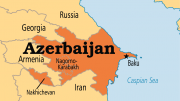BEIRUT — President Trump’s assertive new strategy toward Iran is already colliding with the reality of Tehran’s vastly expanded influence in the Middle East as a result of the Islamic State war.
The launch of the strategy signaled an important shift in U.S. Middle East policy away from an almost exclusive focus on fighting the Islamic State to an effort that also pushes back against years of Iranian expansion in the region.
But the strategy offers no specifics for how to confront Iran’s pervasive presence on the ground in Iraq, Syria and beyond, raising questions about how easy it will be to push back against Iranian influence without triggering new conflicts.
The difficulty of changing tack on what has amounted in recent years to a tacit alliance with Iran in Iraq for the purpose of fighting the Islamic State was evident this week in a sharp rebuke by Iraqi Prime Minister Haider al-Abadi to Secretary of State Rex Tillerson’s call for Iranian-backed Iraqi militias to “go home.”
The militias are “part of the Iraqi institutions,” Abadi responded in a statement. “The Hashd al-Shaabi should be encouraged because they are the hope of the country and the region,” he said, referring to the coalition of militias known as the Popular Mobilization Forces.
Source www.washingtonpost.com



Be the first to comment at "The U.S. is on a collision course with Iran in the Middle East"